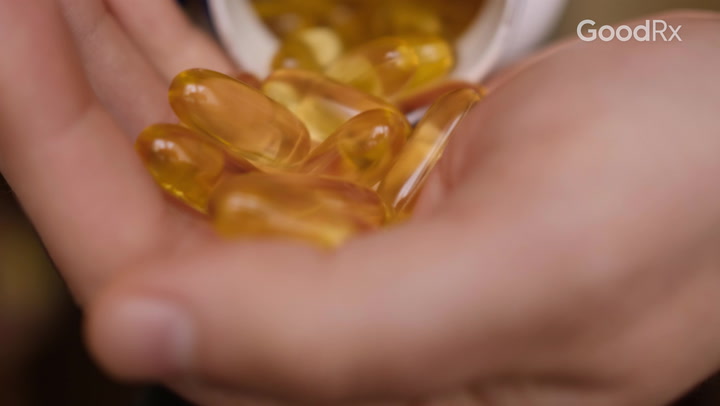
High-Cholesterol Foods: The Best and Worst Choices for Your Heart Health
Key takeaways:
Not all high-cholesterol foods are the same. A heart-healthy diet includes foods that are high in good cholesterol as well as foods that are low in bad cholesterol.
If you have high cholesterol, try to avoid processed foods and foods high in saturated fat and sugar.
Foods that help lower cholesterol include fruits and vegetables, whole grains, nuts, beans, and fish.
Many people are curious about how food affects cholesterol levels. Understanding this relationship is especially useful if you have high cholesterol or you’re trying to keep your heart and blood vessels healthy. Or maybe you want to make changes without medication or you want your diet to give your medication the best chance to work.
If you’re curious about any of these heart-healthy topics, you’re in the right place. Let’s take a look at the different kinds of high-cholesterol foods and which ones are good and bad for you.
What is cholesterol?
Cholesterol is a fat-like substance that the body needs to function. But there are different kinds of cholesterol. Too much of some kinds and too little of others can lead to atherosclerosis. This is a condition that can block arteries and cause heart attacks and strokes.
A cholesterol test (lipid test) looks for “good” and “bad” cholesterol in the blood:
Bad cholesterol: This includes LDL (low-density lipoprotein) cholesterol and triglycerides. They increase the risk of cardiovascular disease.
Good cholesterol: This is HDL (high-density lipoprotein) cholesterol. It helps to protect the heart and blood vessels. And it can offset some of the harmful effects of bad cholesterol.
The foods you eat affect the balance of LDL, HDL, and triglycerides in your body.
Which foods raise bad cholesterol?
If your goal is to improve your balance of good and bad cholesterol, it’s best to avoid foods that raise bad cholesterol levels. This includes foods that are high in saturated fats, trans fats, and sugar.
Let’s look at some foods that increase LDL and triglyceride levels.
Fatty cuts of red meat
Foods that are high in saturated fat are linked to a higher risk of heart attack and stroke. Red meat is high in saturated fat. So try to avoid:
Marbled steaks
Pork
Veal
Lamb
Processed meats
These foods raise LDL levels and triglycerides. They also contain large amounts of salt and preservatives that increase the risk of heart disease. Examples include:
Deli ham
Salami
Pastrami
Bologna
Sausage
Bacon
Fast foods and fried foods
Fast food often uses oils and fats that raise LDL levels. This increases the risk of blockages in the arteries. Eating a lot of fried food at home can also increase the risk of heart attack and stroke. To enjoy fried food in a healthier way, try these tips:
Use an air fryer instead of frying in oil.
Fry at a higher temperature to decrease cooking time.
Try frying in oils that work well at high temperatures but are still heart healthy. Some options include safflower, sunflower, and avocado oils.
Drain food on paper towels before serving.
Solid fats
Any type of fat that is solid at room temperature tends to contain the type of cholesterol that can raise bad cholesterol levels. Examples include:
Margarine
Shortening
Butter
Lard
In place of these, you can try canola, safflower, avocado, sunflower, or olive oil.
High-fat dairy products
Choose milk and cheese products that are lower in fat, or try a nondairy alternative. Some heart-healthy choices include:
Skim or 1% milk instead of whole milk
Low-fat yogurt (unsweetened) in place of yogurt made with whole milk
Cheese made with skim or part-skim milk instead of full-fat cheese
Almond, soy, or oat milk instead of dairy
Foods high in sugar
Any food with added sugars can increase triglycerides and LDL cholesterol. Keep an eye on the food label, especially the line about “added sugars.” Try to avoid products that have high-fructose corn syrup.
Foods that commonly have added sugars include:
Sweetened beverages
Pastries
Desserts
Processed foods, like sweetened cereals, snack bars, dressings, and sauces
Alcohol
Drinking too much alcohol can worsen triglyceride levels. To lower the risk of heart disease, experts recommend no more than 2 drinks a day for men and no more than 1 drink per day for women.
Which foods lower high cholesterol?
The good news is that there are plenty of delicious and healthy foods that help to lower bad cholesterol and raise good cholesterol.
Some examples include:
Nuts: Nuts are high in fiber and healthy fats. The best nuts for improving cholesterol levels are walnuts, almonds, pistachios, macadamia nuts, pecans, and hazelnuts.
Beans and lentils: These are a great source of lean protein that are also high in fiber. These include black, pinto, kidney, and white beans. Lentils and split peas are also good options.
Whole grains: This includes quinoa, brown rice, and foods made with whole-grain flours. Instead of foods made with processed grains (like white bread), look for whole-grain tortillas, breads, pastas, and cereals. Whole-grain oats are especially helpful in lowering LDL.
Fruits and vegetables: These help to lower total cholesterol and LDL. Fresh or frozen is best, without added salt or sugar.
Fish: Fish — like salmon, herring, and trout — contain omega-3 fatty acids. This lowers triglycerides and raises HDL. The American Heart Association recommends eating at least 8 ounces of non-fried fish every week.
Plant-based foods: Foods made with plant products tend to be lower in saturated fat and higher in fiber. But this is only true if they haven’t been highly processed. Check the food label to look for the amount of saturated fat, fiber, and added sugar.
Common misconceptions about food and high cholesterol
Research in science and medicine continues to grow. So the recommendations for healthy eating also evolve. Here are a few updates regarding food and cholesterol:
Not all high-cholesterol foods raise cholesterol levels. The Dietary Guidelines for Americans from the U.S. Department of Agriculture (USDA) recommend not overdoing it on high-cholesterol foods. Instead, it recommends eating them if there are other nutritional benefits. Two good examples of these foods are eggs and shrimp.
Low-fat isn’t always heart healthy. Decreasing the amount of saturated fat and trans fat is good for your heart. But good fats — monounsaturated and polyunsaturated fats — can help your HDL cholesterol. And it’s not good for your heart to add a lot of sugar or salt to make up for less fat.
Supplements can’t take the place of a healthy diet. Some vitamins and supplements may help support a healthy lifestyle. Others haven’t been shown to make a difference. For heart health, supplements can’t take the place of a well-balanced diet and regular exercise.
The bottom line
Your total cholesterol level is not as important as the balance between good and bad cholesterol. To keep a healthy balance of LDL, HDL, and triglycerides, limit foods that are high in saturated fats and sugar. Instead, choose foods that are higher in fiber and healthy fats. Whenever possible, avoid things that are highly processed. And eat more foods that come from plants.
Why trust our experts?


References
American Heart Association. (2020). Cooking to lower cholesterol.
Centers for Disease Control and Prevention. (2022). Food labels.
Centers for Disease Control and Prevention. (2022). Prevent high cholesterol.
DiNicolantonio, J. J., et al. (2016). The evidence for saturated fat and for sugar related to coronary heart disease. Progress in Cardiovascular Disease.
Hollænder, P. L. B., et al. (2015). Whole-grain and blood lipid changes in apparently healthy adults: a systematic review and meta-analysis of randomized controlled studies. American Journal of Clinical Nutrition.
Hooper, L., et al. (2020). Reduction in saturated fat intake for cardiovascular disease. The Cochrane Database of Systematic Reviews.
Hunter, P. M., et al. (2017). Functional foods and dietary supplements for the management of dyslipidaemia. Nature Reviews Endocrinology.
Kim, S., et al. (2021). Red meat and processed meat consumption and the risk of dyslipidemia in Korean adults: A prospective cohort study based on the health examinees (HEXA) study. Nutrition, Metabolism, and Cardiovascular Diseases.
Klop, B. et al. (2013). Alcohol and plasma triglycerides. Current Opinion in Lipidology.
Lee, Y., et al. (2017). Effects of dark chocolate and almonds on cardiovascular risk factors in overweight and obese individuals: A randomized controlled-feeding trial. Journal of the American Heart Association.
MedlinePlus. (2020). Cholesterol.
Mellendick, K., et al. (2018). Diets rich in fruits and vegetables are associated with lower cardiovascular disease risk in adolescents. Nutrients.
Micha, R., et al. (2013). Unprocessed red and processed meats and risk of coronary artery disease and type 2 diabetes — an updated review of the evidence. Current Atherosclerosis Report.
National Institute on Alcohol Abuse and Alcoholism. (n.d.). Drinking levels defined.
U.S. Department of Agriculture. (2020). Dietary guidelines for Americans, 2020-2025.
U.S. Food and Drug Administration. (2022). How to understand and use the nutrition facts label.
Yanai, H., et al. (2018). An improvement of cardiovascular risk factors by omega-3 polyunsaturated fatty acids. Journal of Clinical Medical Research.
Zambón, D., et al. (2000). Substituting walnuts for monounsaturated fat improves the serum lipid profile of hypercholesterolemic men and women: A randomized crossover trial. Annals of Internal Medicine.

























